You must be logged in to rate content!
10 minute(s) of a 758 minute read
11-16-2013
Here are a few video's of Volvo X on a 2.5 mile road course, and I will have to work on the camera positions just a bit more the next time.. For the first initial run on Daily Driver capable settings the car did absolutely great, and with a bit more camber and a sway bar that is about 30 percent larger in diameter than the IPD bar I have on there now, the car should do much better.
The preliminary idea for setup on the next session is to stiffen the front spring setting just a hair and see about getting more of a performance sway bar than is offered for these cars, along with a more performance/track alignment. Keep in mind that I have this car setup for daily driver also, and the car was driven over an hour each way to get to the track and back, so this is more of a neutral setting at this time. We can still play with the coil over Dampening and Rebound settings a bit more on the next session, but I wanted to get some hard runs for our base setting, and then see what we can do to adjust it to a more track friendly setting later.
For the people that wondered about my intake system using the cowl vent was going to have a negative air pressure issue at high speeds, I think the wiper arms tell the tale.. I guess the wipers for these cars were not made for this type of activity.. LOL
12-10-2013
Here are some more pictures of some of the daily use of Volvo X, and I must say that I am tired of the ice we have had over the last week, eventhough the car looks right at home in it.. LOL I have had a lot of guys ask me how I can drive the car in weather conditions like this, but they do not understand that this car was built to be a daily driver, and that is no matter the weather condition.. I am finding that the car is harder to keep clean than I thought this color would be, but it really isn't anything that several car wash visits a week wont take care of.. LOL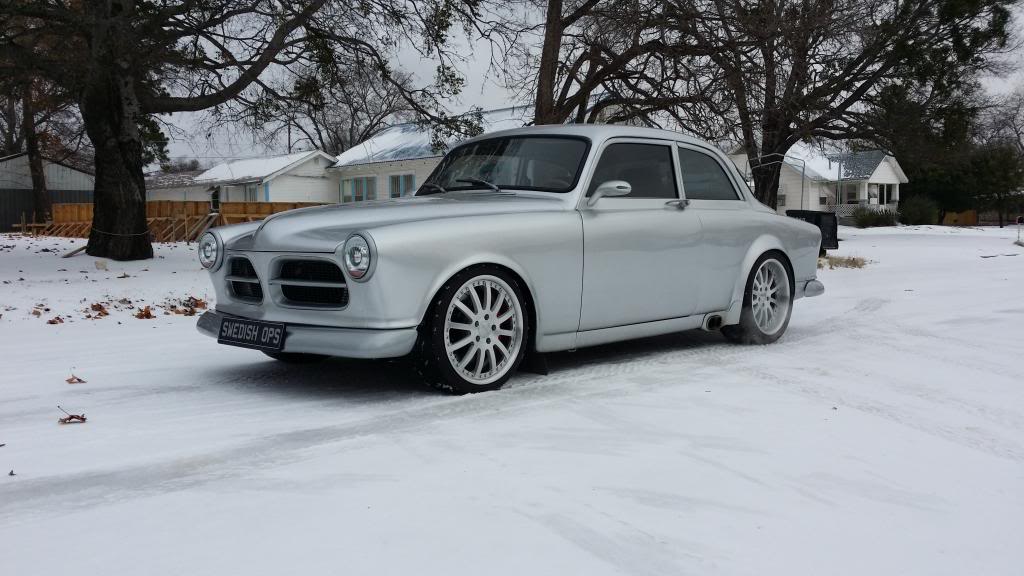
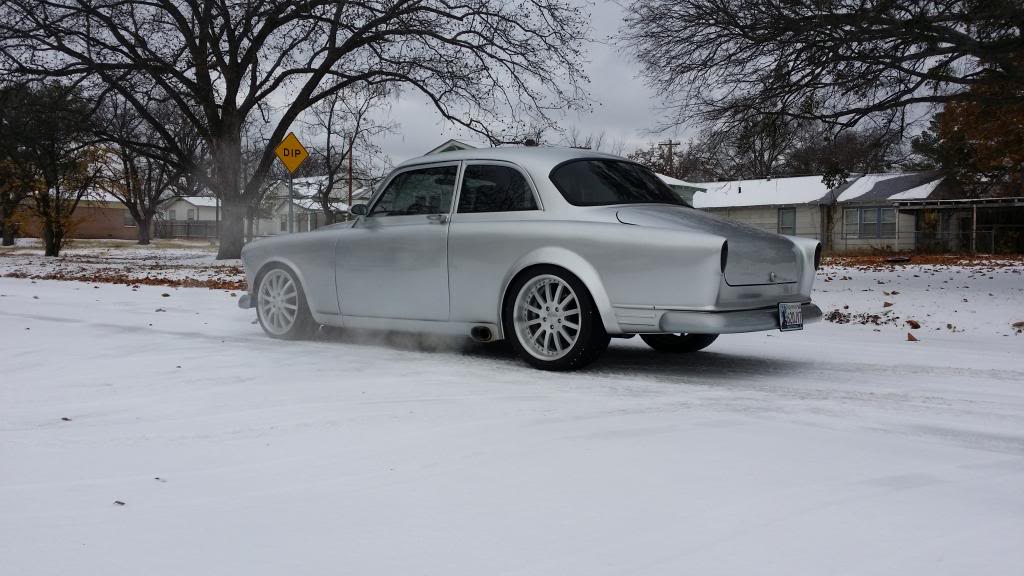

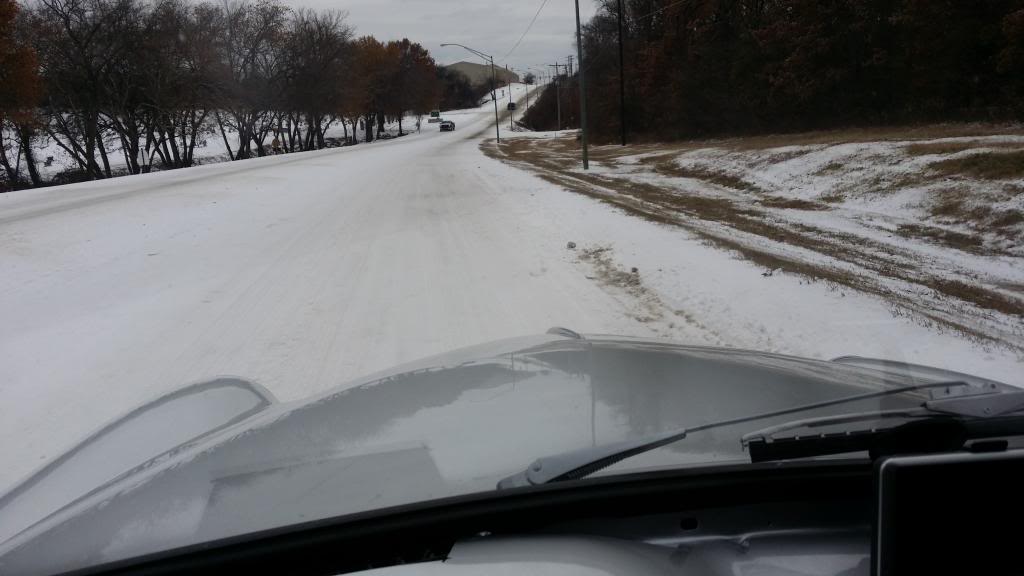
2-7-2014
I have a Standing 1 Mile Top Speed Run coming up, and my goals for this Amazon will be the 175-180mph mark in the Standing Mile as a daily driver with all the modern conveniences, amd there are actual top speed obstacles added by the fact the car is a driver, because I am not trying to sacrifices any daily comforts that would typically be removed for a dedicated race car. I am really curious, because I would like to see some pictures of some of the fastest Amazon's that were capable of some sort of prolonged top speed, along with seeing some of the efforts that were made to ensure these cars were capable aerodynamically.
This is a Standing 1 Mile Top Speed.. During this mile your times and speeds are caught at different points of the mile, and the recorded Top Speed you are traveling when you cross the 1 mile mark. I am not worried about being able to hit the mph mark with gearing or power, I am really only concerned with the aerodynamic and weight properties of the car being a factor over 150mph (Which it gets there easily in 4th at this point), because there are potential air flow issues over that. I will say that at the 100mph up, I don't notice the Turbulent air that is common to a lot of car, and can normally be felt and heard with the beating on the side windows along with a bumpy resistance.. I was very surprised on how quiet the air is on this car while it is over 100mph, so I am hoping that translates to less issues to combat on the 1 mile run.. LOL
I am currently running a 3:50 rear gear ratio as a daily, and I am achieving an instant 115mph when shifting out of 3rd gear, but I will be bumping up to a 3:20 or 3:08 rear end ratio, and that should get me up at my goal speed of 175-180mph while taching within my power range. Each of those gear ratio's have their benefits, but I am thinking I would be better off going with the 3.20 ratio to keep the rev's up instead of potential lugging, but it could be the case that the 3.08's might be better due to not needing as much rev's.. These LS motors pull hard all the way to max rev, so I will have to figure out the best shift points when I get there, and luckily there will be a lot of runs for trial and error..
Here is the 3.08 Gearing @ Max Rev
----Ratio--------------------------------MPH
1st 2.87------------------------------59.3
2nd 1.89-----------------------------90.3
3rd 1.28-----------------------------133.4
4th 1.00-----------------------------170.7
5th .82------------------------------208.2
Here is the 3.20 Gearing @ Max Rev
----Ratio--------------------------------MPH
1st 2.87------------------------------57.2
2nd 1.89------------------------------86.9
3rd 1.28-----------------------------128.4
4th 1.00-----------------------------164.3
5th .82------------------------------200.4
Here is the 3.50 Gearing @ Max Rev
----Ratio--------------------------------MPH
1st 2.87------------------------------52.36
2nd 1.89-----------------------------79.51
3rd 1.28-----------------------------117.41
4th 1.00-----------------------------150.28
5th .82------------------------------183.27
If you have any insight as to what the ballpark results have been with any particular car, along with any pictures of the cars that were capable of 130mph plus on something other 1/4 mile drag strip , it would be appreciated. Top Speed on a short 1/8 or 1/4 mile run is way different then a full mile or more, because there are other factors to consider with the prolonged speed over a greater distance, and that is why people have to dedicate their suspension, body, and powertrain setups for each desired race event.
Here is the only reference I can find about an Amazon at Bonneville in 2007, and it doesn't really answer any questions..
I met the owner of this '67 122S several weeks ago, but went back with the camera today.
It ran in G- production on its Bonneville runs. The motor is a .010 over B-20 with 14.7:1 compression, forged ceramic coated Aries(sp?) pistons on Bofor rods. It has Hillborn mechanical fuel injection, forged roller rockers, crank scraper, distributorless ignition(I forgot what kind). The cam was special ground by Ed Iskedarian, who is a personal friend of the owner. It has a M-40 trans with a 4:11 rear end. Supposed to have run 126mph at Bonneville, against a class record of 139mph which has been upped to at least 156mph now. Most of the above was told to me by the owner.
Someone shared a link with me, and it is suppose to calculate necessary horsepower to reach a particular speed. http://www.wallaceracing.com/Calcula...or%20Speed.php
The formula uses Frontal Surface Area, Drag Coefficient, and weight of the car to estimate, and I wonder how accurate it is? The frontal area of my amazon with a splitter is at a estimated 12 square ft. (There is a formula to calculate that, see below also),and according to the estimated Drag Coefficient of the chart below, I think I am actually over estimate it at .5 by picking the worst rating of the Sedans versus some sort description that might encompass the smaller design of the Amazon ?
Vehicle Drag Coefficient
Description-----Low----Medium---High
----------------------------------------
Experimental----0.17----0.21----0.23
Sports------------0.27----0.31----0.38
Performance-----0.32----0.34----0.38
60's Muscle------0.38----0.44----0.50
Sedan------------0.34-----0.39----0.50
Motorcycle-------0.50-----0.90----1.00
Truck-------------0.60-----0.90----1.00
Tractor-Trailer---0.60-----0.77----1.20
Calculation of Frontal Area
Frontal area represents the front projection area of the vehicle. If one takes a picture of a vehicle, it is the area included in the outline. Use the following to calculate:
1. Calculate the area of a rectangle which would encompass the front of the vehicle (multiply width by the height). For motorcycles, use the handlebar width (to a maximum width of 30 inches) and a height consisting of seat height plus an estimated "seat to helmet" height.
2. Adjust the figure obtained above for areas not included, such as top rounded corners, etc. Typical adjusting values are 85 percent for cars, 70 percent for motorcycles, and 100 percent for trucks.
Here is what was calculated, but I am not sure of the distance it takes to get there, and I am running Standing 1 Mile total.
Using your vehicle Speed of 200 MPH takes 327.68 HP to overcome air drag.
Rolling resistance is 18.03
For a total of 345.71 HP to run 200 MPH
I have the First Round of Go Fast decals for the event, and I have Racing Numbers and a few more decals being made for the quarter panel area and lower fenders, along with some of the component company logo's that we use with our kits.. The main quarter panel logo will be a larger version of the hood logo with the Red Step Blocks that will fit on the upper rear quarter panel section, and it is about 70in's long, so it will go from the tail light to about 12in from the rear of the door. The front plate is going to have to come off during the event, so I think that will take away from the repetitiveness of the Swedish Ops on the front.
I really like the Hood Decal, so I am thinking that it will remain on the car after the rest of the decals come off... LOL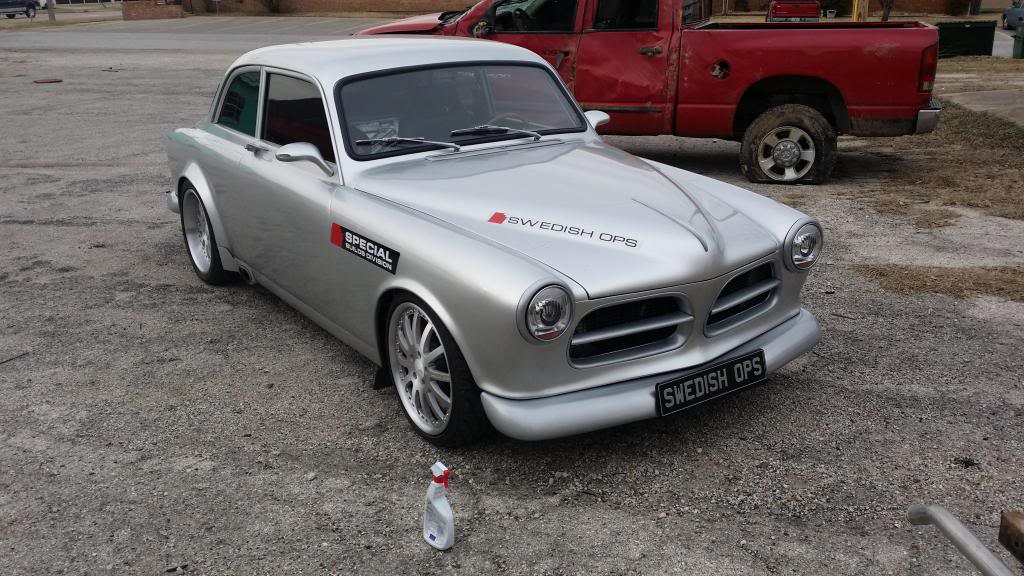
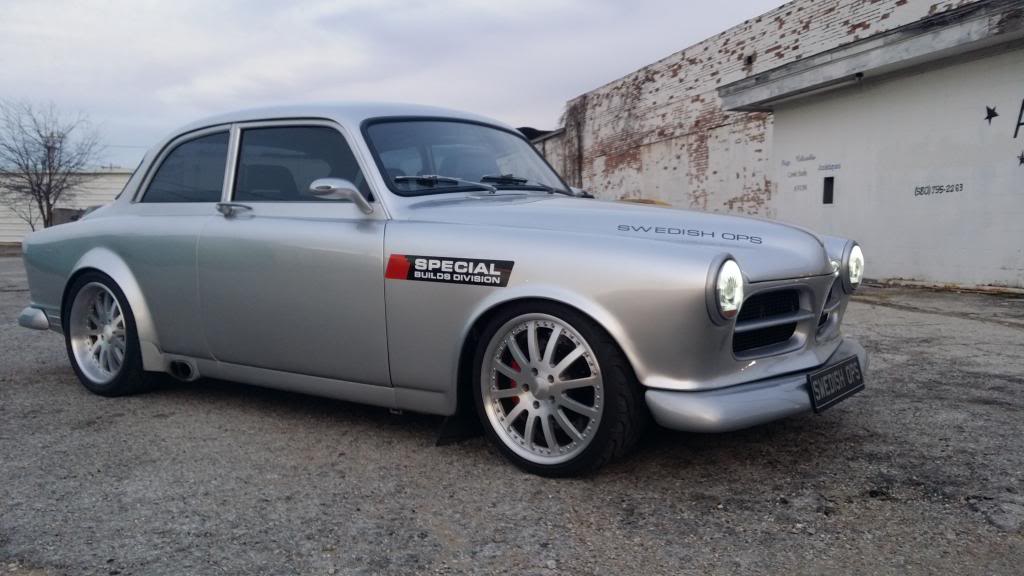
I had also entertained blacking out the door and window frames, and I think I like it, but I am not sure..? It definitely gives it more of a later 240 Volvo look with the black out, so I don't think it is completely out of place, but I am not entirely sold on it..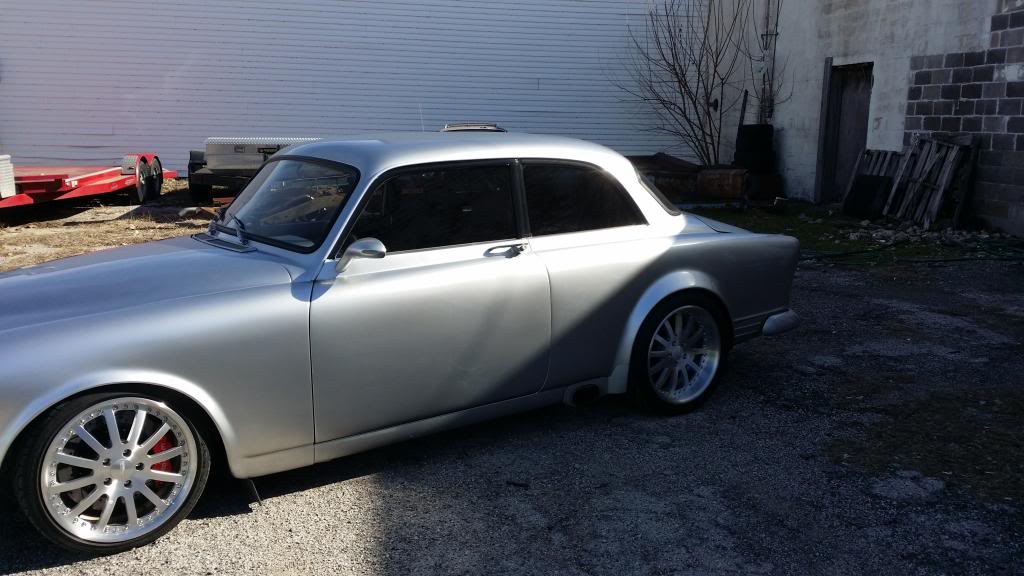






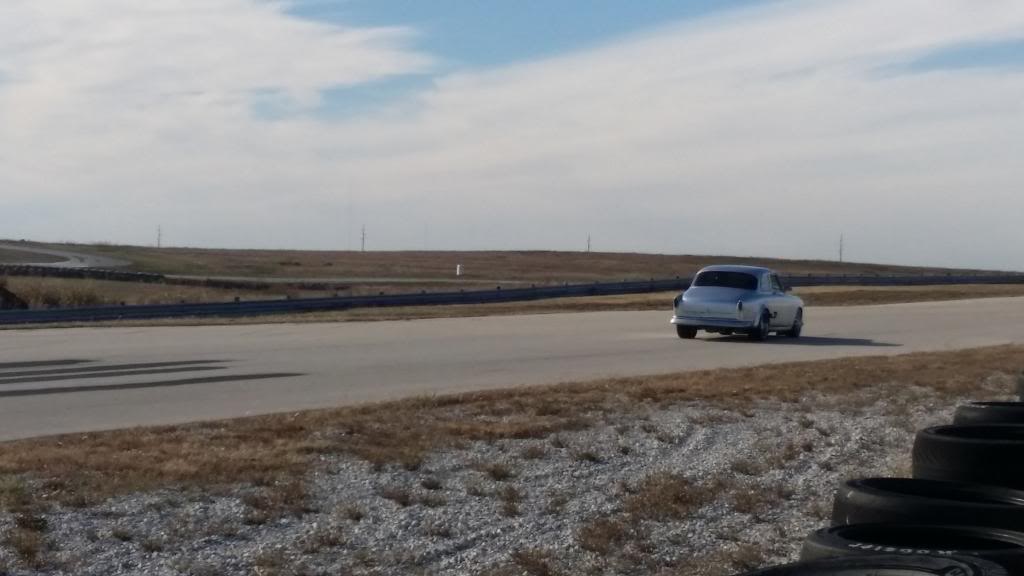

Nice details!
Posted by Diggymart on 7/15/19 @ 1:21:16 PM